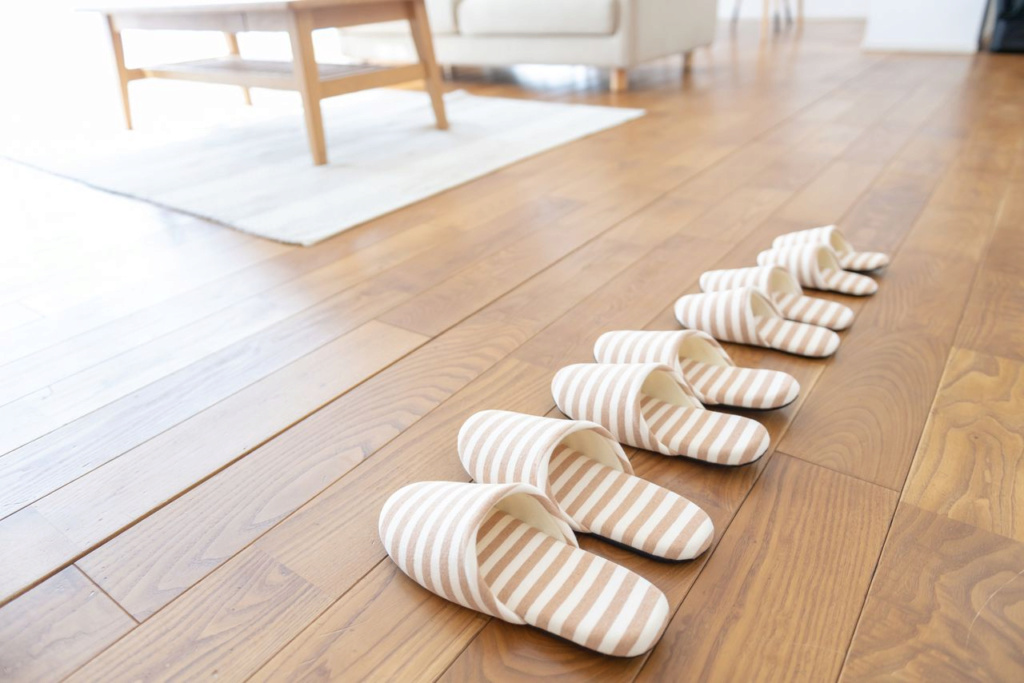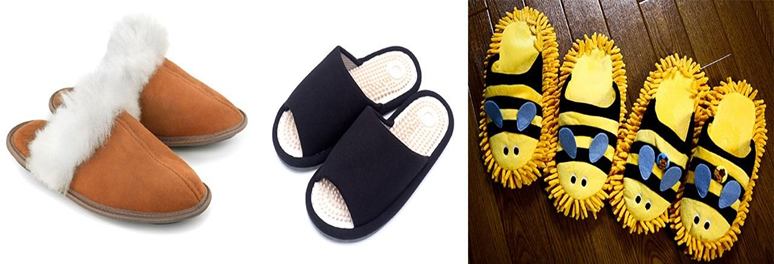Customs and public etiquette... Do you know why the Japanese take off their shoes before entering the house? Find out now

The custom of taking off one's shoes when entering a home is a tradition that extends its roots back to ancient times in Japanese culture. Although the use of slippers (called “geta” in Japanese) in Japan dates back to a relatively recent period in the 1950s, the custom of removing shoes before entering the house extends back to ancient times. This custom reflects Japanese cultural values such as cleanliness and respect for indoor spaces. The home is considered a sacred place and leaving shoes outside is considered a part of respect for the place and for others. When entering a house or some traditional Japanese building, people are often asked to take off their shoes and put on their own indoor slippers.
How did the culture of wearing slippers develop after World War II?
Visitors to ryokans in Japan are required to remove their shoes. Then put them in the shoe cabinet or on the floor and instead wear slippers or slippers (a light shoe, without a heel, that can be easily put on and taken off) inside the hostel. There are also special slippers for use in the bathrooms. In Western-style hotels, you can enter the reception hall wearing shoes, but it is common for slippers to be available in these places as well.

A group of slippers is lined up at the entrance of the Aizu Tsuruya Inn in Aizuwakamatsu City, Fukushima Prefecture. (Image via M-Louis).
Japan remained closed to most foreigners for more than two centuries, until an 1854 treaty with the United States heralded the rapid opening of the country and the arrival of many Western visitors. While the Japanese are accustomed to taking off their traditional “zori” sandals or “geta” clogs before entering closed places, most foreign visitors are not accustomed to this matter.

Slippers intended for use inside a modern home with a wooden floor. Image from Pixta.
Since there were few Western-style hotels at the time, travelers stayed in Japanese-style lodgings. They often encountered problems when they entered these places wearing their shoes as they were accustomed to, as they treated the tatami mats as a kind of carpet, which led to damage to these rice straw mats. This remained the case until the residents of one of the foreign settlements in Yokohama asked a craftsman in Tokyo named Tokuno Risaburo to sew what is now known as the sole or flip-flop. In fact, they wore it over the shoe. They were similar to today's slippers as they were open at the heel, and it is said that the left and right sole were identical in shape.
At the beginning of the 1950s, the Western style of living began to invade the lives of the Japanese, and dining rooms with wooden floors became more common, which encouraged shoe manufacturers to think about sewing slippers that could be worn indoors alone and not over shoes, as Westerners began to do in Japan at that time. Removing shoes at the entrances to hot springs, sentos, shrines, temples, and Japanese restaurants with low tables where diners sit on the floor is unavoidable in Japan. It is also common to see businessmen negotiating in the meeting room wearing smart formal suits and slippers.

A woman removing the geta in the hallway on the left and a set of zori sandals on the right. Image from Pixta.
Clean space
Some say the custom of removing shoes in Japan dates back about 2,000 years ago, and there are picture scrolls from the Heian period (794-1185) showing aristocrats following this custom in their homes.

Like many religious institutions in Japan, Engakuji Temple in Kamakura requires visitors to remove shoes. Image from Nippon.com.
Due to the country's hot and humid summers, the floors of traditional houses were raised slightly off the ground to keep out moisture and allow cooling winds to pass underneath. At the entrance, people take off their shoes at the bottom step, then climb inside.
The Japanese are accustomed to sitting on tatami mats or the floor, and this has reinforced the habit of removing dirty shoes from unpaved roads before entering the house. Mats are also a place to put mattresses for sleeping. Even the slippers they wear inside the house are removed before entering the tatami-furnished rooms.

The Japanese take off their shoes at the entrance to the door, which is usually lower than the level of the house. This step is called agarikamachi, while the upper level, on which the main part of the house is located, is called tataki. Image from Pixta
Sociologist Nakani Chi stressed the importance of separating the “inside” uchi and the “outside” soto as a way of defining separate spaces in Japanese culture. The inside of a house is seen as a clean space, compared to the dirty outer space, and the entrance to the house is the boundary of this space. Shoes are removed to prevent unclean items from entering the house.

Even slippers worn indoors must be removed before entering the tatami-matted rooms. Image from Pixta.
Indoor shoes in schools
In most schools from elementary to high school, students must take off their shoes at the entrance and replace them with shoes called awabaki. In the Edo era (1603-1868), it was normal for children to take off their shoes in school and walk barefoot. But the shift to wooden and concrete school buildings, and then the transition from Japanese clothing to Western clothing around 1930, led to the idea of using awabaki instead of walking barefoot or wearing tabi socks. The current popular design of the awabaki was created in the late 1950s and closely resembles ballet flats. There are also schools where sports shoes that resemble awabaki are used.

Awabaki shoes on the left (pixta), and shelves for storing them at the entrance to the school on the right (photo library).
Insole manufacturers are constantly trying to compete by touting new features in their insoles, such as comfort linings, nubs for massaging and acupressure on the heel of the feet, and antibacterial and odor-resistant properties. There are even slippers that can be worn to clean the floor like mops. There are also some slippers that can be cleaned in washing machines, and some are equipped with an anti-slip feature. Some people have different sets of slippers to match different seasons and occasions.

Winter slippers on the left (yexta), slippers with acupuncture ridges in the middle (pixta), and slippers for cleaning floors (right, Tatsuo Yamashita).
Source: websites

